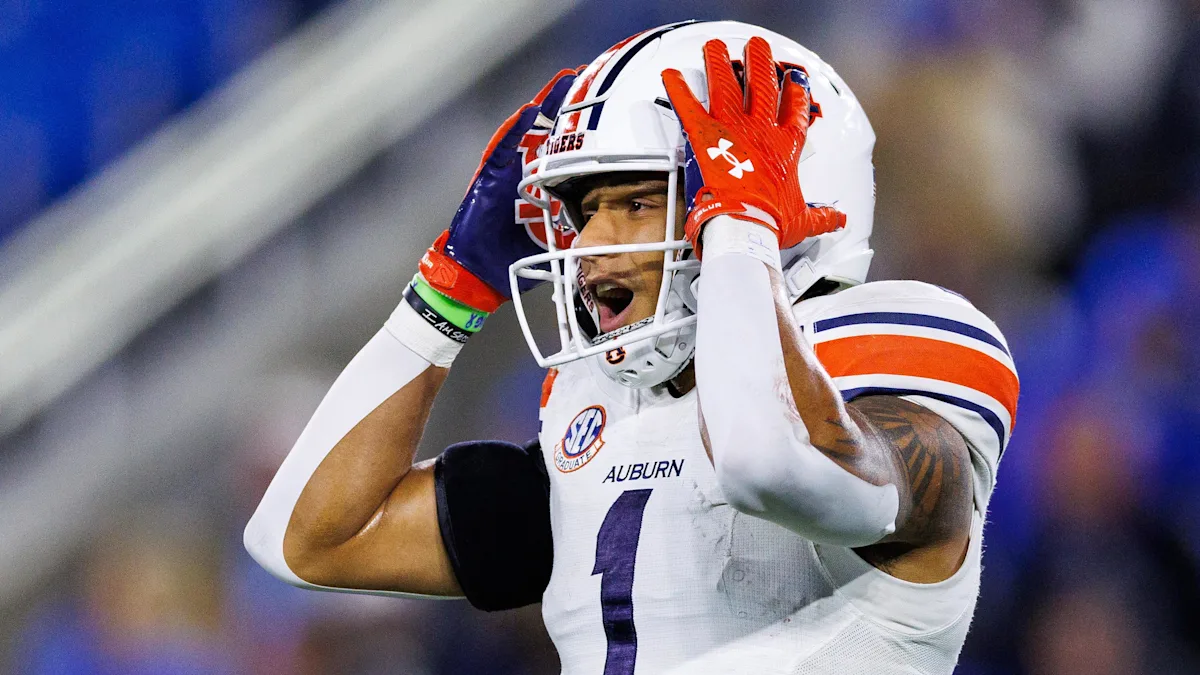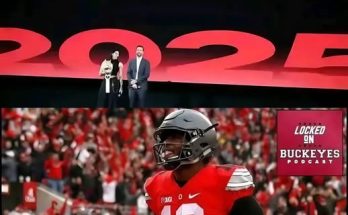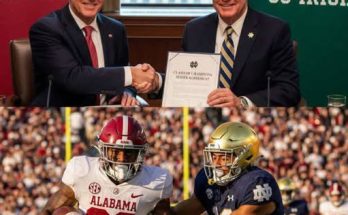Auburn football’s 2026 recruiting class has suffered another setback, as yet another promising prospect has withdrawn his commitment. While decommitments are nothing new in the modern era of college football recruiting—where name, image, and likeness (NIL) opportunities, coaching changes, and shifting program fortunes constantly alter the landscape—this particular development has added to a growing sense of uncertainty surrounding the Tigers’ recruiting momentum under head coach Hugh Freeze. For a program looking to climb back into national prominence, every loss stings. But when these decommitments begin to stack up, especially within the same recruiting cycle, they can serve as red flags signaling deeper concerns that need to be addressed quickly.
Auburn’s loss of this latest 2026 pledge highlights the volatility of long-term recruiting commitments. The player, whose name carried buzz and whose talent had the potential to reshape Auburn’s depth chart in the coming years, is now exploring other options. Whether the decision was based on personal considerations, NIL offers, or doubts about Auburn’s future trajectory, the timing couldn’t be worse for Freeze and his staff, who are trying to build recruiting momentum heading into a crucial phase of the cycle.
Recruiting, by nature, is fluid. Commitments from underclassmen—especially in the sophomore and junior years of high school—are rarely ironclad. As players continue to develop and as more schools enter the picture, their perspectives and priorities often shift. Auburn has been both the beneficiary and the victim of this reality. However, when multiple recruits back away in a short span, it begins to feel less like coincidence and more like trend.
The challenge for Auburn now is twofold: damage control and renewed momentum. The Tigers must not only reassure the remaining members of their 2026 class that the program is stable and forward-looking, but they must also identify and pursue new targets who can replace the lost talent—and preferably upgrade it. That’s easier said than done in the hyper-competitive world of SEC recruiting, where every school is jockeying for position with high-profile recruits and where the margin for error is razor thin.
Hugh Freeze’s second full recruiting cycle at Auburn was always going to be critical. After inheriting a program that had slipped from national relevance and consistency, Freeze set out to rebuild not just the roster but also the brand. That effort included reshaping the coaching staff, modernizing Auburn’s approach to NIL, and creating a culture that could resonate with top-tier high school talent. Early returns showed promise. The 2024 and 2025 classes brought in some quality players and generated excitement among the fan base. But recruiting isn’t linear, and momentum can be fleeting—something the Tigers are now learning the hard way.
This decommitment could signal concern about the program’s ability to compete with the SEC’s elite on the recruiting trail. Programs like Georgia, Alabama, LSU, and even Texas and Oklahoma (soon to be full SEC members) have established recruiting machines backed by extensive NIL collectives and long-standing winning cultures. Auburn, by contrast, is still in the process of reestablishing itself, trying to convince elite recruits that the Tigers are on the rise and that they should be part of a historic resurgence. Losing a key 2026 piece only makes that pitch harder.
Another potential issue stems from uncertainty around Auburn’s on-field product. Last season’s performance was a mixed bag, and while there were flashes of potential, the overall trajectory left some questions unanswered. In an age where recruits pay close attention not just to tradition and facilities, but also to offensive schemes, development paths to the NFL, and coaching continuity, those questions matter a great deal. A recruit may view a 6-6 season not just as a blip, but as a sign that the rebuild is moving too slowly—or not at all.
The decommitment also raises important questions about Auburn’s NIL infrastructure. In today’s recruiting landscape, NIL has become an unavoidable factor. While Auburn has made strides in this area, it remains to be seen whether its collective can compete dollar-for-dollar with SEC giants. If a recruit is being promised a six-figure NIL deal elsewhere and only a fraction of that at Auburn, it’s difficult to fault them for making a financially driven decision. Freeze himself has spoken openly about the challenges Auburn faces in this space, calling for more cohesion and support from boosters and the university at large.
There’s also the issue of optics. Every decommitment, whether fair or not, becomes fodder for rival fan bases and message boards. Perception becomes reality. Recruits may start to ask themselves why others are backing off Auburn. Is there something they’re missing? That ripple effect can be devastating if not managed properly. Freeze and his staff must now counter those narratives with aggressive re-recruitment of existing commits and transparency about their vision moving forward.
It’s not all doom and gloom, though. Auburn remains a program with immense potential. The facilities are elite, the tradition is rich, and the path to playing time can be quicker than at blue-blood schools with crowded rosters. Moreover, Freeze has shown he can connect with recruits and build relationships that matter. One decommitment—or even a few—won’t doom the 2026 class. But it does mean Auburn must sharpen its focus, reassess its strategy, and perhaps most importantly, produce results on the field this fall.
A successful 2025 season could erase a lot of doubts. Winning, after all, is the ultimate recruiting tool. If Auburn can string together SEC wins, compete with Alabama and Georgia, and show signs of progress, recruits will take notice. Players want to join ascending programs, not those mired in perpetual rebuilds. The ball is now in Auburn’s court to prove that they are indeed on the way up.
In the meantime, the Tigers must remain relentless on the trail. That means identifying new prospects, nurturing relationships with under-the-radar players who might blow up in their senior seasons, and making sure current commits feel valued and locked in. Freeze’s staff will also need to lean on their evaluative skills, trusting that development can close the gap with more highly ranked peers.
There’s also a chance that this decommitment could open the door for future flips. The recruiting world is interconnected and dynamic. One player backing out may give another a chance to rise. Auburn could even return to this same prospect later in the process and win him back. Many decommitments are more about timing than final decisions. As the Tigers prove their mettle over the next year, the story of this 2026 class is still being written.
Ultimately, Auburn’s latest recruiting loss is a moment of frustration, but not a final verdict. Every program in the SEC, even the best ones, loses players. The question is how they respond. For Freeze and Auburn, the answer must come swiftly and convincingly. Because in the high-stakes world of SEC football, momentum can be rebuilt—but only if the foundation is strong and the direction remains clear.
As the 2026 cycle continues to unfold, Auburn still has time to regain its footing. The decommitment stings, but it also serves as a wake-up call. There are no guarantees in this cutthroat arena, and only the most aggressive, well-prepared programs thrive. Freeze has talked at length about vision, culture, and commitment. Now is the time to show it—not just in press conferences or on social media, but in real recruiting results that tell every high school player in America that Auburn is where they want to be.



